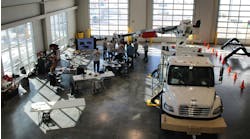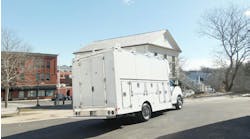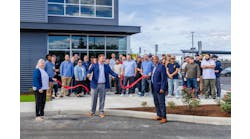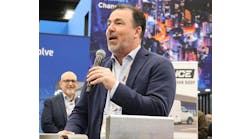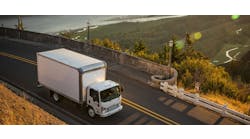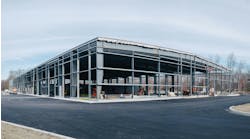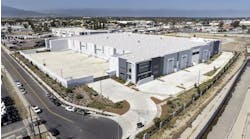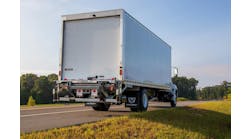The website for Western Truck Fab boasts, “If you can spec it, draw it, or dream it—we can build it!” But to become a leading custom truck body manufacturer in the highly competitive San Francisco Bay Area municipal market, company President Mark Meyers emphasizes the importance of building relationships as well.
“It’s customer service with the munis,” Meyers says, and he jokes that if a municipal purchasing lead gets mad, a vendor has to wait until he retires to get another shot at the business. “Helping them write bid specs, whatever they need, that’s the bottom line with those guys. And each one is different, as far as how particular they are with jobs. You get to learn what they expect.”
Founded by Mark and Julie Meyers in 1984, the current East Bay headquarters is the company’s fourth location, and the successive facilities have grown with the business over nearly 35 years. Starting with a 1,500 square foot shop, the company now occupies a 26,000 square foot facility in an industrial area adjacent to the Hayward Executive Airport.
Not unusual for the owner of a truck body business, Meyers’s role extends from shop oversight to product design to sales calls—although he admits he’s “trying to step out of the shop a lot more lately.”
His team also include an inside and an outside salesman, along with a full-time parts manager and three full-time engineers. The parts department accounts for about 15% of total sales, Meyers notes.
For 2017, WTF moved about 525 trucks through the facility, largely vehicles built for municipal fleets. Along with the cities of San Francisco, San Jose, and Oakland, the company’s market extends from the Salinas area, about 90 miles south, to Sacramento, about 100 miles north and east.
“Our capacity still is limited here, but I’m not ready to move again,” he says. “The past three years have been pretty crazy.”
As the website advertises, WTF focuses on custom truck solutions—and ‘custom’ is a word Meyers uses frequently.
“We can’t compete against the cookie-cutter guys,” Meyers says. “We’re not after an eight-foot service body with a rack, hitch and plug. We build our own service bodies, we build our own flatbeds, we fabricate our own boxes. We paint, we wire emergency lighting. We can pretty much do everything in-house.”
The company also carries the Crysteel dump body line (“about the only thing we don’t build ourselves”); a range of truck equipment including Maxon, Waltco, Tommy Gate lifegates, Liftmoore cranes, Palfinger articulating cranes, and BOSS under-deck air compressors.
Fortunately, as Meyers notes, many municipal fleet managers “haven’t come around” to standardizing their equipment. Although, for work trucks under 19,000-lbs GVW, 80% of specs are written around Ford. For the medium- and heavy-duty specs, “it’s a crapshoot” regarding the commercial vehicle OEMs. WTF’s production is split about 50%/30%/20% between light-, medium-, and heavy-duty trucks, respectively. Meyers also reports that 90% of WTF orders comes through truck dealers.
“What makes us successful on a service body, flatbed, or a dump body is the custom aspect,” Meyers again emphasizes. “Most of our truck bodies are one-off. The challenge is to get that business from [competitors] and then be able to produce it.”
Unique conditions
All told, WTF employs about 50 people, with the majority working in production. As with manufacturers across the US, skilled workers are hard to come by. But the Bay Area poses some additional challenges.
“We’ve been all around the block, from ads in the paper to bonuses for guys who can bring guys in, all that. We’ve got a sign in the front to get the word out,” Meyers says. “I think it’s just hit and miss. You’ve just got to keep your good guys—that’s the hard part. You’ve got to treat them right; they’ve got to like the work environment. Nowadays, you’ve got to be in-tune to their needs. Obviously, it’s pay—especially in the Bay Area.”
Meyers notes the high cost of living there, where a basic 1,500 square foot house goes for $1 million. Consequently, the high cost of having a business based in the Bay Area is a significant competitive disadvantage. And truck body builders have come and gone, he adds.
“To be a body manufacturer in the Bay Area, as you can imagine, is tough. We’re competing against guys in Stockton, Sacramento, even Los Angeles. The cost of labor is a disadvantage. Municipal bids can go all over the place—not just regional,” Meyers says. “When the economy goes down, bids get tight. We have to be able to run jobs smarter. And that’s where the customized niche opportunities really come into play.”
And that’s where a custom shop can get a foot in the door with a municipality. “Piggyback bids” allow WTF to take advantage of repeat business. But even then, as Meyers explains, a different department within a municipality might have slightly different spec.
“Dump trucks are probably not so customized, and they’re a little bit easier to piggyback off of,” he says.
The dot.com boom, similarly, has been hit and miss for the local municipal market. While the Northern California native notes there’s more construction underway than he’s ever seen, municipalities tend to “lag” the cycles of the regional economy.
He points out that San Francisco is undertaking a long-overdue fleet refresh.
“With the latest boom, in all my years, their replacement budgets now seem to be pretty stout. And it’s much needed,” he says. “They’ve got truck from the 70s and 80s. With municipalities, they’ll just put 6,000 or 7,000 miles a year on them, but they’re so old. That replacement has been pretty strong for the past few years.”
San Francisco, of course, is “pretty conscious” when it comes to environmental issues. The city specs for B20 diesel and is exploring hybrid vehicles. Natural gas vehicles are “big,” especially with the airports. And while alternative-fuel vehicles do pose some design challenges for upfitters, so far truck body specs are still based on the work at hand rather than sustainability trends, he explains.
Adapting to challenges
The fabrication shop features an up-to-date CNC plasma cutter, CNC punch brake, and CNC press brake, along with shears, notchers, 40-foot and 50-foot paint booths, an overhead crane, and MIG and TIG welders.
The engineers use SOLIDWORKS 3D CAD software.
The in-house custom fabrication capability provides WTF numerous efficiencies, as well the flexibility that’s required of a successful custom shop. “It’s hard to engineer a one-off job all the way through,” Meyers says. “A lot of our stuff is ‘hey, we need [this part] right now.’”
The company has invested in shop equipment “pretty heavily” over the past five years, he adds.
“Anything you can do to cut down labor hours is a smart investment, because that’s the bottom line for us,” Meyers says. “When we went to the plasma cutter, that really saved us a ton of time. There’s a necessity to get out of the caveman era and get into the new technology.”
Indeed, he cites getting away from “old-school methods” as one of his top challenges in growing the business.
“You have to open to new processes, and not getting stuck in the way you did things 20 years ago,” he says. “It’s matter of listening to my employees. If I am able to sit down and really listen to their suggestions on how things should be run differently, that’s where most of the information and ideas come from.”
But on a tour of the facility Meyers points proudly to the clearly “old school” scheduling system: The conference room next to the shop floor is dominated by walls with magnetic white boards covered with tags to represent jobs, organized into production steps and schedules. Appropriately, a clock and calendar can’t be missed.
“We have a computer system [Shoptech Software’s E2 Shop System] that we’re trying to transition into, but we can’t make the move,” he admits. “You’ve got to really commit to a full-time person who’s computer literate to make the jump. But our scheduling is so fluid.
“A good customer comes in, and they’ve got something they need quick. We have to move stuff around. This changes on an hourly basis for us. It’s also juggling chassis delivery with what you can do before the chassis comes. It’s really important to have good visibility into everything on the schedule.”
As an example of listening to employee suggestions, Meyers points to the uncluttered shop floor.
“My thinking was ‘get the job out the door,’ and I didn’t care what the shop looked like,” Meyers says. “My foreman came to me and said, ‘we can’t work like this.’ I said ‘no,’ sweeping the floor was a waste of time. That’s where I came from. Who cares about building a rack or having to clean up? It took me a little while, but we ended up hiring a full-time guy. All he does is make sure steel gets to scrap bin, the floors are clear so people aren’t tripping over stuff.
“There’s technology, but there are ways to do things better that you figure out by listening.”
The long view
Meyers credits the struggle that comes with the cyclical economy for making WTF a stronger company.
“We had pretty rough years in 2009, 2010, 2011,” Meyers says. “The challenge is ‘what goes up must come down.’ You have to be prepared. You have to be able to diversify. When we started business, we were making flatbeds. Then we got into custom bodies. The we started making service bodies, and got more into repairs—just trying to branch out our business, especially in slow times.”
Meyers concedes he doesn’t plan to keep this up forever, but the closer he gets to retirement the less it appeals to him, even after 35 years.
“The exit strategy has changed over my years in the business. When I was younger my priorities were focused on growing the business and making it successful; it was a big part of my life,” hew says. “As I get older my priorities have shifted along with my views of the business. It will be a challenge to move on from here, but obviously, at some point in time I need to get out of here.”
Just not yet.
